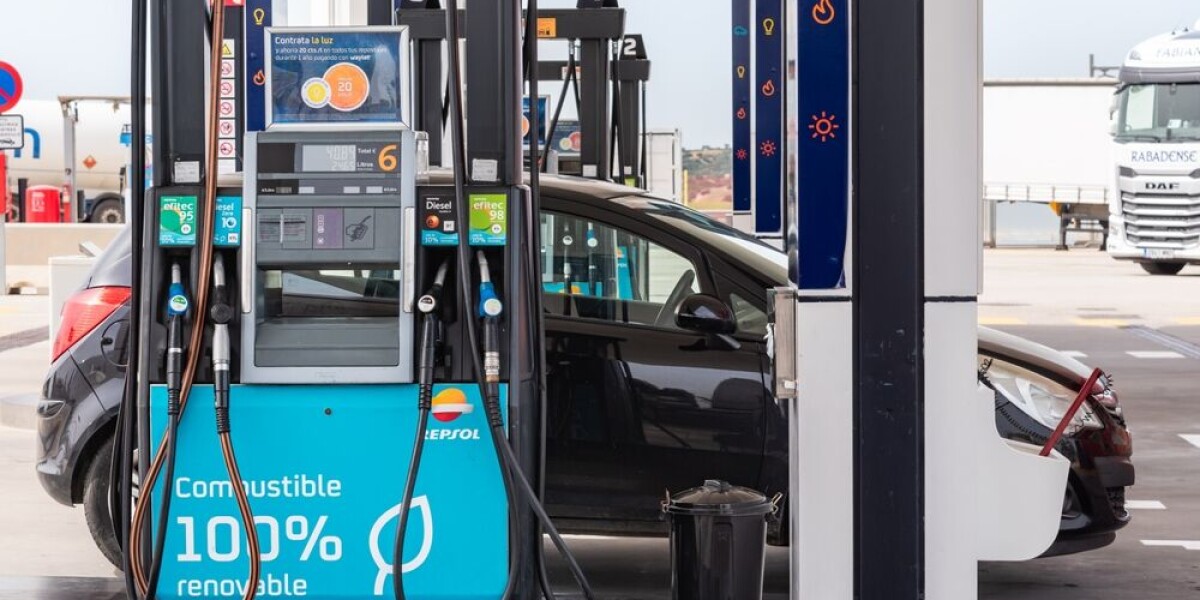
What is xtl 'green diesel' and can it improve french crit'air rating?
- Select a language for the TTS:
- UK English Female
- UK English Male
- US English Female
- US English Male
- Australian Female
- Australian Male
- Language selected: (auto detect) - EN
Play all audios:

THE FUEL WAS MADE AVAILABLE TO THE GENERAL PUBLIC IN JUNE XTL ‘green diesel’ is available for the general public in France after a government decree in June, letting drivers cut their
emissions by up to 90%. A study is underway to see if vehicles that use it should be given a better Crit’Air rating. The synthetic diesel, variously known as ‘green diesel’, XTL, (for
X-to-Liquid), PUR-XTL, HVO (Hydrotreated Vegetable Oil) or HVO 100, is an amalgam of natural gas, biomass, plastic waste and vegetable oil designed work as a direct replacement for diesel.
It reduces the carbon emissions of diesel vehicles by up to 90% and produces 25-30% less particulate matter and can be used mixed with diesel, or on its own. The fuel has been available for
use in commercial vehicles in France (and around Europe), including taxis, HGVs and industrial vehicles since 2017. In June, the French government issued a decree to allow the general
public to buy XTL, following the examples of Belgium, Spain, Finland and Germany. 2024 MAP: WHERE ARE FRANCE’S CLEAN AIR DRIVING ZONES? WHAT ARE RULES? CAN I PUT XTL ‘GREEN DIESEL’ IN MY
VEHICLE? While the 'green diesel' is supposed to be a direct swap for diesel, its use has only been approved in more recent models: * Peugeot, Citroën, Opel and Mercedes: vehicles
must have a sticker inside the fuel cap that indicates ‘XTL’ as an acceptable fuel. * Fiat, Alfa Romeo, Abarth, Lancia, Chrysler, Renault, Dacia and Jeep: all ‘Euro 6’ approved vehicles *
MINI: all diesel vehicles dating from after 2001 * Toyota: all models equipped with the specific ‘XTL’ marking * BMW: diesel vehicles produced after 2000 * Ford: Compatible vehicles include
the Transit 2.0L EcoBlue, Transit Custom 2.0L EcoBlue, Tourneo Custom 2.0L EcoBlue, Ranger 2.0L EcoBlue/ 3.0L EcoBlue, Transit / Tourneo Connect 1.5L EcoBlue, New Transit Connect 2.0L
EcoBlue, New Tourneo Connect 2.0L EcoBlue, Transit Courier 1.5L Duratorq and New Transit Courier 1.5L EcoBlue. The fuel itself is actually considered to be better for engine health than
diesel, despite it being an amalgamation. In addition to its environmental benefits, XTL has a higher cetane level than regular diesel (70 for XTL and 51 for diesel), meaning that
essentially it burns better, allowing for colder starts and a quieter engine. CAN XTL ‘GREEN DIESEL’ IMPROVE MY CRIT’AIR RATING? HGVs and buses that exclusively use XTL are eligible for a
Crit'Air 1 sticker. This has not yet been extended to all diesel vehicles. The French parliament confirmed that it was looking into Crit'Air ratings for a wider range of ‘green
diesel’ vehicles in a statement from May 2023. A GUIDE TO CRIT’AIR STICKERS IN FRANCE “The performance of XTL-HVP 100 is currently being assessed in a study by the French institute of
petroleum and renewable energy in conjunction with the DGEC,” it added that the results were expected by the end of 2023. However the study is still ongoing. Nonetheless, since the purpose
of these stickers is to show the level of pollution that a vehicle emits, rated from ‘level 1’ (lowest) to ‘level 5’ (highest), logically a vehicle that is 90% cleaner should have a better
Crit'Air rating. PRICE AND AVAILABILITY Its price on September 29 is €1.69, compared to €1.56 for diesel, making it a more expensive choice. The French government could change this by
lowering its tax on ‘green diesel’. However, Florian Mohand, director of energy transition at Bolloré Energy, told transport magazine Décision Atelier that this was not a government
priority. “Current policy is geared towards the adoption of electric vehicles, and it is not certain that the administration will push to encourage the use of a fuel linked to internal
combustion engines,” he said. Instead, he suggests that market pressure could play a key role, particularly if XTL fuel is approved as a means of improving a vehicle’s Crit’Air rating.
Neither is the fuel widely available for the general public in France, with only one Carrefour supermarket (in Athis-Mons, Essonne) currently advertising it. This is likely to change as
public awareness of the product grows and the supply chain adapts. As a point of comparison, SP95-E10 petrol was introduced in 2009 and fifteen years later accounts for 50% of the French
market.
